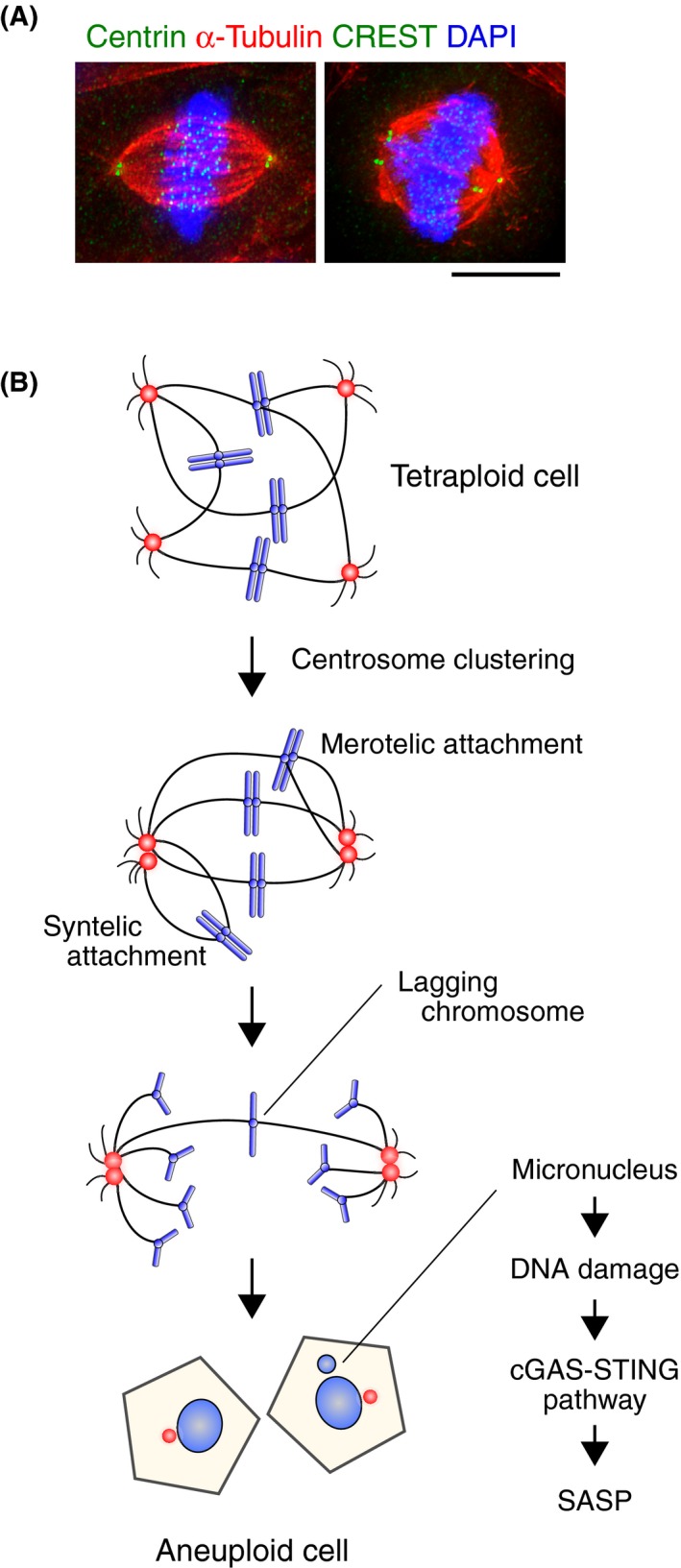Figure 3.

Tetraploidy‐induced aneuploidization. A, Left panel: bipolar spindle of a diploid cell (a primary fibroblast from mouse neonatal skin). Right panel: pseudobipolar spindle of a tetraploid cell containing an excessive number of chromosomes (a primary fibroblast from neonatal skin of a vimentin phosphodeficient mouse (VIMSA / SA)).11 Scale bar = 5 μm. B, Tetraploid cells containing excessive numbers of chromosomes avoid deleterious multipolar mitosis by clustering centrosomes and forming a pseudobipolar spindle. However, centromere clustering facilitates the formation of erroneous kinetochore‐microtubule attachments such as syntelic or merotelic attachments, resulting in the production of aneuploid cells. Chromosomes forming merotelic attachments can result in the formation of micronuclei through lagging chromosomes. Chromosomes in micronuclei are often damaged, which triggers activation of the cyclic GMP‐AMP synthase‐stimulator of interferon genes (cGAS‐STING) pathway that leads to senescence‐associated secretory phenotype (SASP) induction
